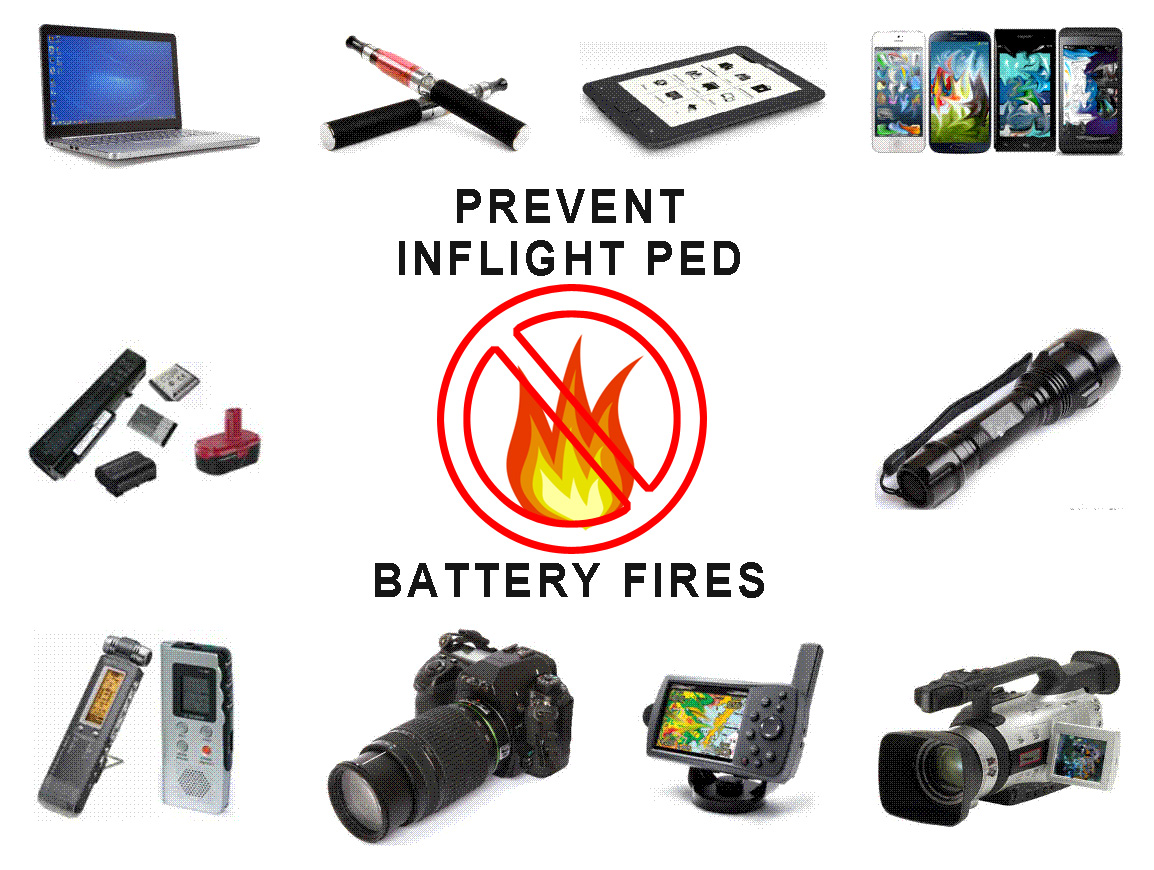
Page 1 ...
Ref pages 15 to 20. especially page 19, paragraph 7
Ref pages 15 to 20. especially page 19, paragraph 7
“Technologies are available that are able to contain portable electronic devices which are actively involved in a lithium-ion battery failure. While there have been several of these containment devices on the market, few have featured both adequate protection for the person attempting to contain the device and a method for suppressing a fire after containment.
New technology now can protect the person moving the device and contain it safely.
Incorporation of this technology is recommended in passenger aeroplanes.”
The “New Technologies” mentioned in the article, would be a fitting description of the FLIGHT FIREBOX.

Resource Page ........Page 2
AIRCRAFT PED FIRES CAUSED BY LITHIUM BATTERY FAILURES
A well known major concern in the airline industry for many years is the inability to effectively contain/extinguish inflight PED Fires on planes (Personal Electronic Device Fire). Sometimes false alarms have even prompted oversensitized crew to turnaround flights besides AOG situations. Passenger and Flight/Cabin Crew daily needs have led to a exponential poliferation of PED use in the form of Laptops, Mobile Smart Phones,EBooks,etc. by passengers and Electronic Flight Bags, EPads & POS devices for crew besides fixed aircraft assets such as Aircraft Emergency Locator Technology/ Personal Locator Beacon devices. This need has even pushed airline governing bodies to allow expanded use of PEDs on board and issue recommendations to make Aircraft PED Friendly. One common factor, ALL these PEDS are powered by Lithium Ion Batteries. On a typical flight," a single aisle jet carrying 100 passengers could have over 500 lithium batteries on board with none of them needed to be tested, certified or even maintained to manufacturing specs", as stated in a report by the Royal Aeronautical Society .

Resource Page ........Page 3
Presentation to the International Air Transport Association's (IATA) Cabin Safety Conference,
Paris, France
At the NTSB, we are happy to spread the word about these safety education products. And there are others as well: In 2009 the FAA issued a SAFO on fighting fires caused
by lithium batteries in portable electronic devices. For those of you who may not know, SAFO is Americanese for Safety Alert for Operators. And, they have developed a video called “Extinguishing In-Flight Laptop Computer Fires” containing specific guidance relating to Lithium battery fires.
Probably some of you here have viewed this video. It does a good job of covering the phenomenon of thermal runaway, in which a fire starts in one cell, and causes adjacent cells to overheat and ignite. The video demonstrates the need to both knock down the initial fire and cool the battery with water or non-alcoholic liquids (for example, from the drink cart).

Resource Page ........Page 4
FAA Releases New Report on Batteries and Battery-Powered Devices resulting in Smoke, Fire, Extreme Heat or Explosion
Aviation Cargo and Passenger Baggage Incidents Involving Smoke, Fire, Extreme Heat or Explosion
As of June 30, 2015, 158 air/airport incidents involving batteries carried as cargo or baggage that have been recorded since March 20, 1991
Note: These are recent cargo and baggage incidents that the FAA is aware of. This should not be considered as a complete listing of all such incidents. The incident summaries included here are intended to be brief and objective. They do not represent all information the FAA has collected, nor do they include all investigative or enforcement actions taken. This list does not include three major aircraft accidents where lithium battery cargo shipments were implicated but not proven to be the source of the fire: An Asiana Airlines 747 near South Korea on July 28, 2011, a UPS 747 in Dubai, UAE on September 3, 2010 and a UPS DC-8 in Philadelphia, PA on February 7, 2006